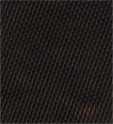|
Home |
Page Menu
United Composites offers for a wide variety of production techniques several types of mould and models. Some of the production techniques UC uses are;
Hand lay-up
-
Vacuum injection (VI RTM)
-
Resin Transfer Molding (RTM pressure injection)
-
Several compression molding techniques (cold pres, warm pres, compression molding of prepregs)
-
Prepreg techniques (vacuum bagging and cure in oven / autoclave)
The selection of mould materials depends mainly on required the operating temperature, pressure and dimensional accuracy of the tooling (mould) which has to be made. We make a distinction between two types of models, the hand made models and the CNC machined (5 axes milling) models. The applied mould materials can be;
MDF/WOOD
for cheaper models were the mould are laminated at room temperature and dimensional accuracy of lesser importance (approx. +/- 0,5 up to +/-1mm). (MDF/wood models are also used for sandformes used by casting of metal moulds). In general this type of models are painting in two component paint systems.TOOL BLOCK (hard polyurethane foam)
This type of model materials are more expensive, and are used for moulds which are laminated and initially cured at higher temperatures and/or pressure, are dimensional more accurate (<+/- 0,5 mm) and are more temperature stable (up to approx. 80 ºC). Tool block type of model materials can be bought in several densities and are generally CNC milled. Milled models are in general painted with and temperature resistant two component paint system like PU based or special epoxy based paints.
UC uses several mould materials. The selection of these materials depends mainly on the number of part to be made, the processing temperatures and pressures, the production rate, chemical resistance and demanded accuracy. FRP materials are:
-
Polyester laminate or polyester concrete
(made by hand lay-up or vacuum injection) Epoxy laminate or epoxy concrete
-
Tooling prepregs
The above mentioned materials are commonly reinforced by glass and/or carbon fibers, or in case of casting filled with quarts sand. Gel coats are normally used to improve the surface quality and to improve release of the product. It is possible when gel coats are used to add all sorts of surface structures to the mould. Gel coats can be based on polyester, vinlyester or epoxy.
Other type of mould materials are; (Mainly used when a higher lifetime, and/or accuracy, and/or process parameters are required.)
-
Aluminum (caste aluminum, milled aluminum, or sheet work)
-
Steel (caste steel, milled tooling steel, sheet work)
-
Ceramics (for extreme high process temperatures)
As already mentioned, different type of production techniques are used by UC, which different type of tooling is needed. We make a distinction of two types, the open mold types and the closed mold types. Some examples are;
Open techniques
-
Hand lay-up mold (one side mold)
Casting molds (consists of one or more mold parts and is a semi open technique).
Closed techniques
RTM techniques
-
Vacuum infusion molds( one side mold vacuum bagged with foil or silicon blankets)
-
Vacuum injection molds (two sided molds).
-
Pressure injection molds (two side molds)
-
Compression molding tooling
-
Prepreg tooling (molds commonly made with tooling prepregs and used in oven and/or autoclave type of production processes)
Molds can be equipped with extra heating. Used methods are;
Water heating/cooling
-
Oil heating/cooling (integration of heating/cooling ducts in mold)
Electrical heating by spirals or heating elements.
Air circulation heating
-
Infra red heating (indirect)
Nowadays 3D CAD design (Pro Engineer, Catia, Solid Works, Mech. desktop etc.) is more and more used in all layers of the industry. By this virtual models are created in the computer and the actual model is not really needed any more. With the introduction of CAM software (Computer Aided Manufacturing) which is nowadays also integrated within some of the above mentioned CAD systems, milling programs can be made and directly send to 5 axes or more milling machines which mill the CAD designed mold directly from aluminum or steel. The step of actually making a model is skipped and replaced by a computer model.
UC works together with highly advanced toolmakers who are equipped with state of the art 5 axis portal milling machines. These machines are capable of milling large size, highly accurate (< +/- 0,5 mm) metal tooling which are double curved.
More and more our customers also decide to have the models made by CNC milling. This due to the higher accuracy, quick production time, and general increased quality.
The information we need to design and produce the tooling is simply 3D drawings on IGES or STEP format.
Some examples
MODELS

MDF model of ceiling element / produced
by Groothuis Modelmakerij i.o. UC

PU TOOL BLOCK model for prepreg tooling of wing spar
MATERIALS

Carbon

Aramide
MOLDS


Example of epoxy RTM mold for high load drain valve

Prepreg tooling for wing skin of UAV

Part of VI-RTM mold for ceiling panel
CAD/CAM

CNC milling of PU TOOL BLOCK

Example of 5 axis milling
machine, info Groothuis modelmakerij
